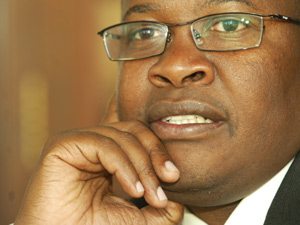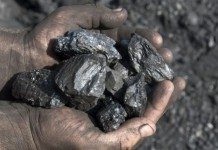
[miningmx.com] – ASKED to describe the climate at Eskom, CEO Brian Molefe, replied: “Some sunny spells, mild in places, with occasional thunder showers’.
A more scientific gauge of Eskom’s health, however, would be how the market views its financial liquidity.
Yields in Eskom’s benchmark bonds relative to those of Transnet have narrowed from a record 12% in April to about 2.5% suggesting there’s more ease with Eskom’s financial stability, no doubt aided by the South African government’s R20bn plus equity injection.
It also helps that Molefe – who accepted the full-time post as Eskom CEO on September 25 – has roped in his colleague from Transnet Anoi Singh, who is now CFO, a role he occupied at Transnet. Said Singh: “The organisation is well positioned from a liquidity point of view for this and the next financial year”.
In addition to the government equity injection, there’s a R15bn cash balance from the previous financial year and the possibility of another international bond.
(On November 23, it announced a €150m (R2.3bn) debt facility with Agence Française de Developpement (AFD) which will be used to finance Eskom’s Distribution Projects in the KwaZulu-Natal, Eastern Cape and Limpopo provinces).
“We went to the UK and had a cup of tea. Investors said they would be receptive to an international bond, but no decision has been made yet,” said Molefe.
More controversially, Eskom hopes to reclaim R22.8bn in terms of its regulatory clearing account which allows it to claw back its costs for previous financial years, in this case for the 2013/14 financial year.
It will achieve this by increasing the levy by up to 16% although the application has to be cleared by the National Energy Regulator of South Africa (Nersa), an independent body that has disappointed Eskom’s claw-back and tariff hopes in the past.
Industrial users in particular kick back against this, especially mining companies where labour inflation is high and commodity prices are under pressure. This, and a certain evasiveness about executive pay – Molefe said no bonuses have been provided for two years – represent some of Eskom’s thunder showers.
The organisation’s liquidity crisis seems to have been becalmed, however. There’s also a new management team in place and although Molefe has a track-record of confrontation with stakeholders, he is also a strong leader.
“There are three things at Eskom that I quickly realised when I started running the company on an interim basis,” he told Miningmx in an interview. “The first is that it was profitable last year by R3bn, and an EBITDA of R25bn.
“Secondly, there was more installed electricity capacity than demand so there was no structural problem. Thirdly, the capital programme had been launched so it is just a matter of ticking boxes. This is easier than having to create a new platform for growth.
“Eskom is not really a turnaround task but more a question of sustaining its trajectory,” he said.
Molefe said that unplanned outages of power was below the targeted 7,000MW while new capacity had been added with just over 700MW of power from the first unit of Medupi and a further 2,147MW available through independent power producers.
Group executive for generation at Eskom, Matshela Koko, said commercial operation of its 1,300MW Ingula pumped storage scheme would come on stream earlier than planned. “Ingula will come in way ahead of the timelines you see,” said Koko.
According to Eskom’s quarterly presentation, the first 333MW from Ingula is expected to come into commerical operation in January 2017 with another 333MW scheduled for March. The entire project would be commissioned by July 2017.
“There is no delay at Ingula or Kusile Unit 1 or Medupi unti 5,” said Koke. “We will make or exceed all timelines that you see,” he said. The timelines set by down Eskom have a estimated probability of success of 80%, said Molefe.











